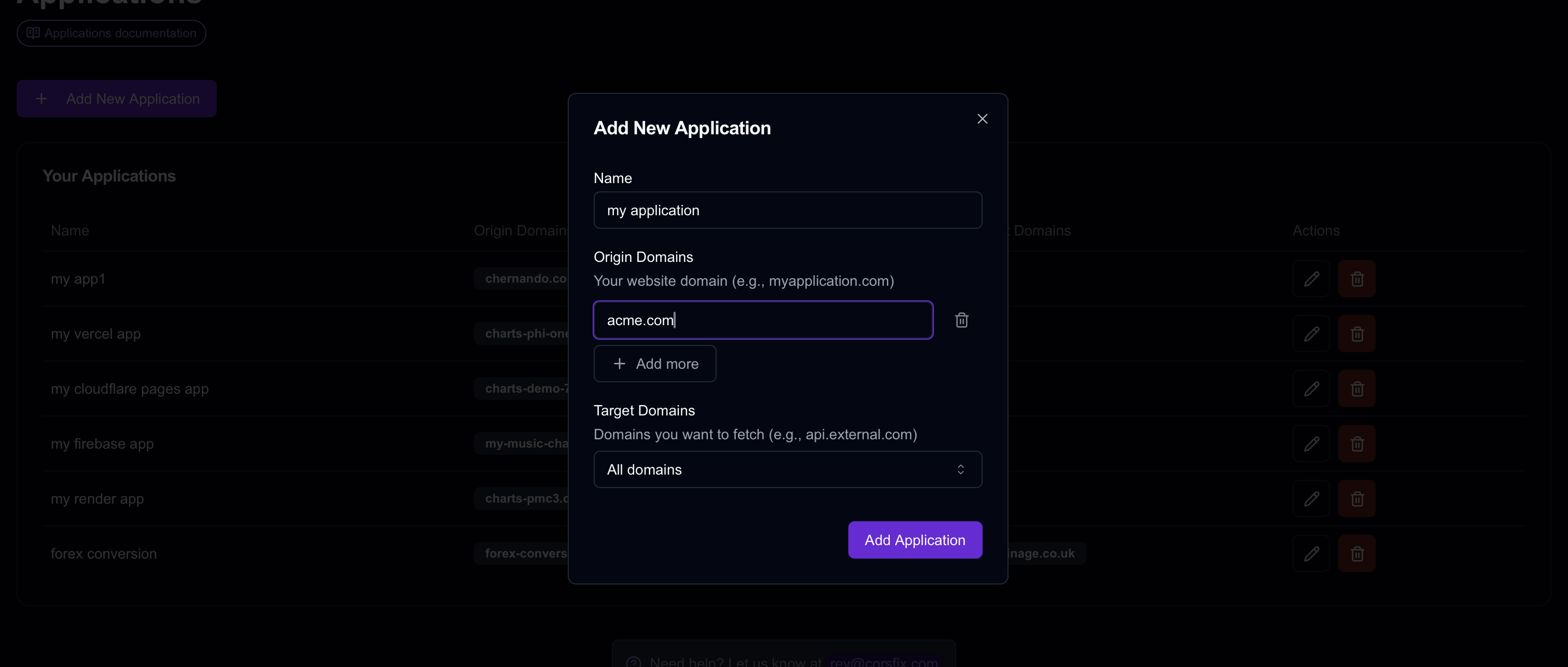Corsfix Quick Start Guide

On This Page
Get started with Corsfix to solve CORS errors and get back to building your app. In this guide, you’ll learn how to take advantage of some features like header override, cached responses and secrets variable, as well as set up your application for production.
1. Getting Started with Corsfix
First things first, head over to the Corsfix dashboard and sign up for a free account. Once you’re in, explore the playground where you can make test requests to your target API. This is the perfect space to see Corsfix in action before integrating it into your project.
- Sign Up & Explore: Create your account and start using the playground.
- Test Your API: Enter your target API endpoint and run a test request.
- Copy the Code: Once your test is successful, simply use the “Copy” button to grab the generated code snippet for your project.
Try running your request with Corsfix now, congrats, you’ve just made your first successful request!
 Corsfix Playground
Corsfix Playground
2. Use Advanced Features
Header Override
Sometimes, you might need to override certain headers, maybe to bypass restrictions on forbidden headers. With Corsfix, you can do this easily by just adding the header override option to your request
Cached Response
If you find yourself hitting the same resource repeatedly, caching can reduce latency and save on throughput. Activate the cached response feature to cache proxied responses.
Secrets Variable
For sensitive data like API keys or token, Corsfix provides a secure way for you to use them without exposing them in your code. Manage your API keys using secrets variable and securely use them in your requests.
Check out our documentation, for more details on configuring these features,
3. Setting Up for Production
When you’re ready to move beyond development, Corsfix scales with you. Here’s how to add your application for production:
- Choose a Plan: Select one of the available plans that best fits your needs.
- Application Setup: During the setup, you’ll be asked to provide:
- Application Name: What you’d like to call your app.
- Origin Domains: The domains of your website (e.g.,
yourapp.com,www.yourapp.com). - Target Domains: Which domains you want to fetch. By default it is set to All domains, but you can select specific ones for more control.
This lets you handle multiple websites and domains, so you have the control you need for your app.
 Adding Application
Adding Application
Wrapping Up
With this guide, you’re well on your way to mastering how you handle CORS errors in your projects and use Corsfix to its full potential. For more details, go to our documentation or check out some of our helpful articles on the blog.